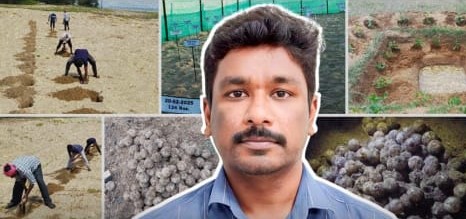- Puducherry boosts olive ridley hatch rates
- Technology enhances turtle conservation efforts
- Community participation key to protecting nests
- Coastal conservation model inspires wider action
The pristine shores of Puducherry host an incredible natural spectacle—the annual nesting of olive ridley turtles, a journey spanning thousands of kilometers from distant waters near Indonesia and Australia. These remarkable creatures choose select beaches with low human interference, minimal light pollution, and ideal sand conditions to lay their eggs, creating a crucial window for coastal conservation efforts.
At the forefront of this endeavor is IFS officer Dr. P. Arulrajan, whose work blends scientific insight, technology, and community engagement to protect these vulnerable turtles. His conservation drive in Puducherry’s 48-kilometer coastline has achieved impressive increases in hatch rates, setting a benchmark for coastal wildlife preservation.
Scientific Innovations Boost Hatch Rates
According to media reports, Dr. Arulrajan employs advanced monitoring techniques and data analysis to optimize nesting conditions. The team uses temperature sensors and controlled incubation environments to ensure the best survival chances for turtle hatchlings, adapting strategies based on environmental feedback.
Empowering Communities for Sustainable Protection
Community involvement forms the backbone of conservation success in Puducherry. Locals are educated about the ecological importance of olive ridleys and actively participate in protecting nesting sites from threats like predation and poaching. As per several media sources, awareness campaigns and eco-tourism initiatives reinforce this community-driven stewardship.
A Model for Future Coastal Conservation
With rising coastal development pressures, Puducherry’s turtle conservation program demonstrates how science, technology, and grassroots action can harmonize to nurture marine life. The effort not only safeguards olive ridley populations but also inspires wider conservation commitments along India’s coastlines.
Looking ahead, continued collaboration between officials, scientists, and communities is vital to sustain and expand these gains, ensuring the turtles’ journeys endure for generations to come.
Disclaimer:
This news story has been developed by Ingenious India based on information available in the open domain for public consumption. Ingenious India does not claim ownership of original reporting and has compiled this article using publicly accessible media sources. For any concerns regarding the information, please contact the editor at ingindia22@gmail.com.








